Stir Fried Kailan or Chinese broccoli with miso butter is a quick and easy recipe. It can be ready in less than 15 minutes and goes so well as a side for many Asian style meals.
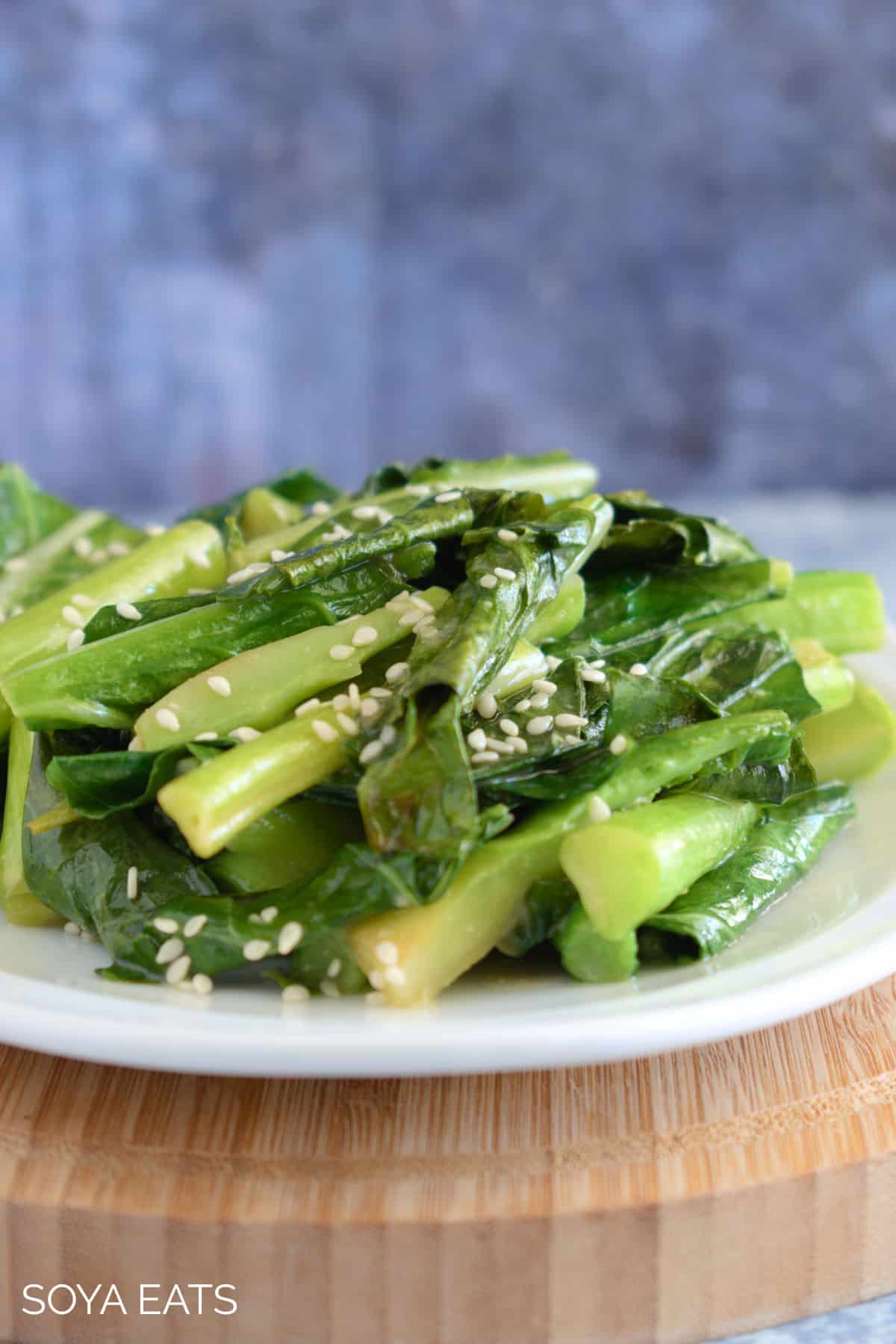
Jump to:
Why You Will Love This Recipe
- This simple stir fried kailan recipe is versatile, and you can adapt this using your favorite Asian greens or spinach.
- It is different from a Chinese kailan recipe with oyster sauce. This recipe uses butter and miso paste, sake, and mirin.
- The dish is gluten-free and can be made dairy-free and vegan-friendly by replacing the butter with a non-dairy version.
- This family-friendly recipe is onion and garlic free and quick to make.
Cost to Make
Estimated cost = $1.50 or $0.75 a serve
What Is Kailan
Kailain or Gai lan is a Chinese leafy green vegetable. It is more commonly known as Chinese broccoli or Chinese Kale in English-speaking countries.
Kailan is firm, with thick juicy stems with firm leaves, with a slightly bitter taste that you can hardly notice. It is ideal for steaming or stir-frying.
The stems of older kailan can be firm and fibrous and need extra cooking time than baby kailan because the stems are thinner and tender (see our tips for success below).
What Is Miso
Miso paste is a traditional Japanese seasoning made from fermented soybeans with salt and koji (a yeast used to start the fermentation process).
Miso paste ranges in color and strength and tastes salty, tangy, and savory. Pale tan miso paste is mild in flavor and slightly sweet, and the darker red-brown miso paste has a more intense flavor.
Miso is rich in nutrients and contains many vitamins, minerals, and probiotics and is an incredibly healthy ingredient to add to your cooking.
To keep the health benefits of miso paste, add it at the end of cooking when the flame is off because high temperatures will destroy the probiotics.
Ingredients
Please note that below is a guide for some of the ingredients we used in the recipe. The printable recipe further down the page has the complete list of ingredients, including quantities and step-by-step instructions.
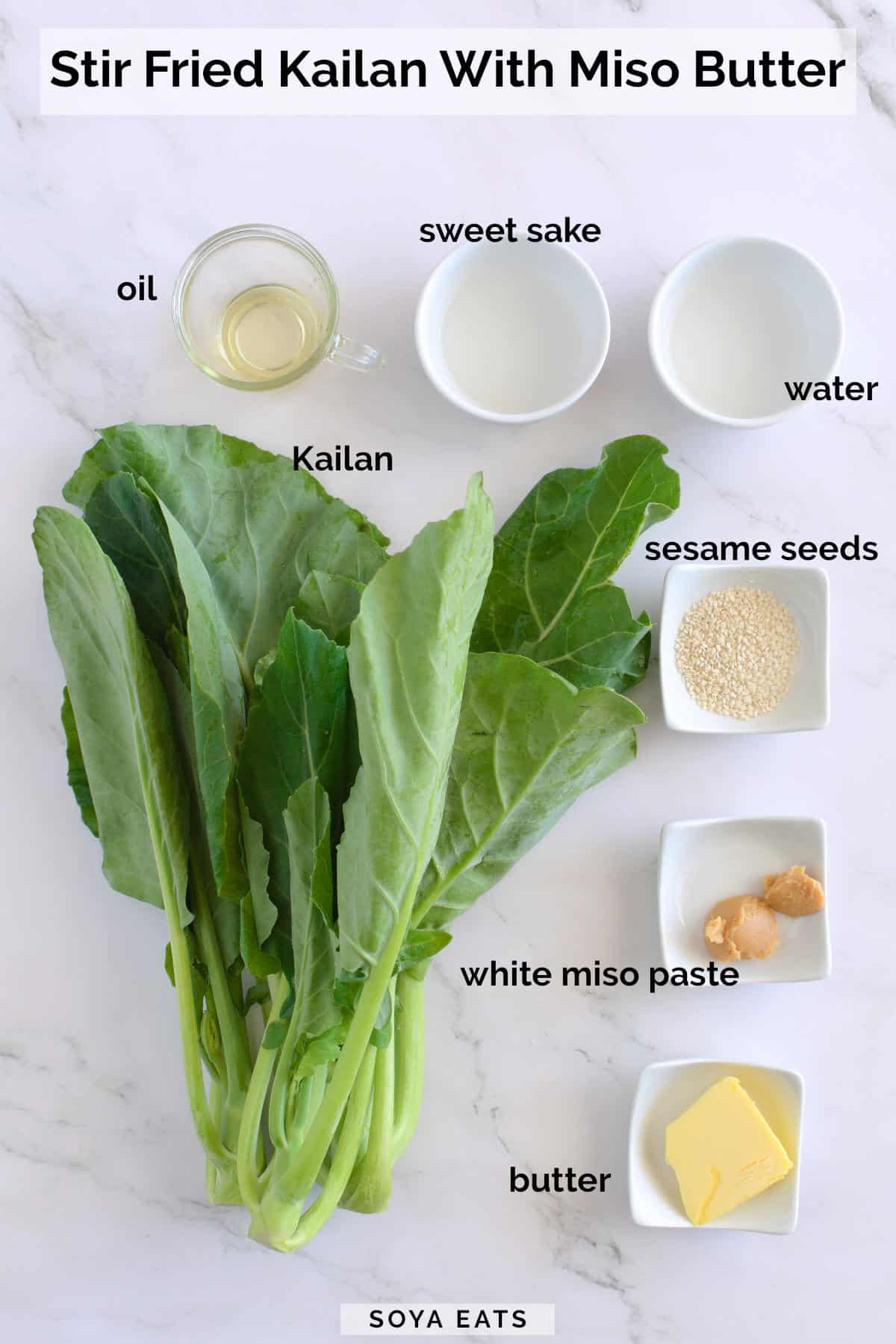
Chinese broccoli or you can use another leafy green vegetable like bok choy or spinach.
Oil - we used vegetable oil, but you could use any light-flavored cooking oil.
Sake and Mirin
Miso paste - we used white miso paste. It is a pale tan color with a mild flavor, but you could also use the red-brown miso paste that is stronger in flavor and add this to taste.
Butter - you can use salted or unsalted butter.
Instructions
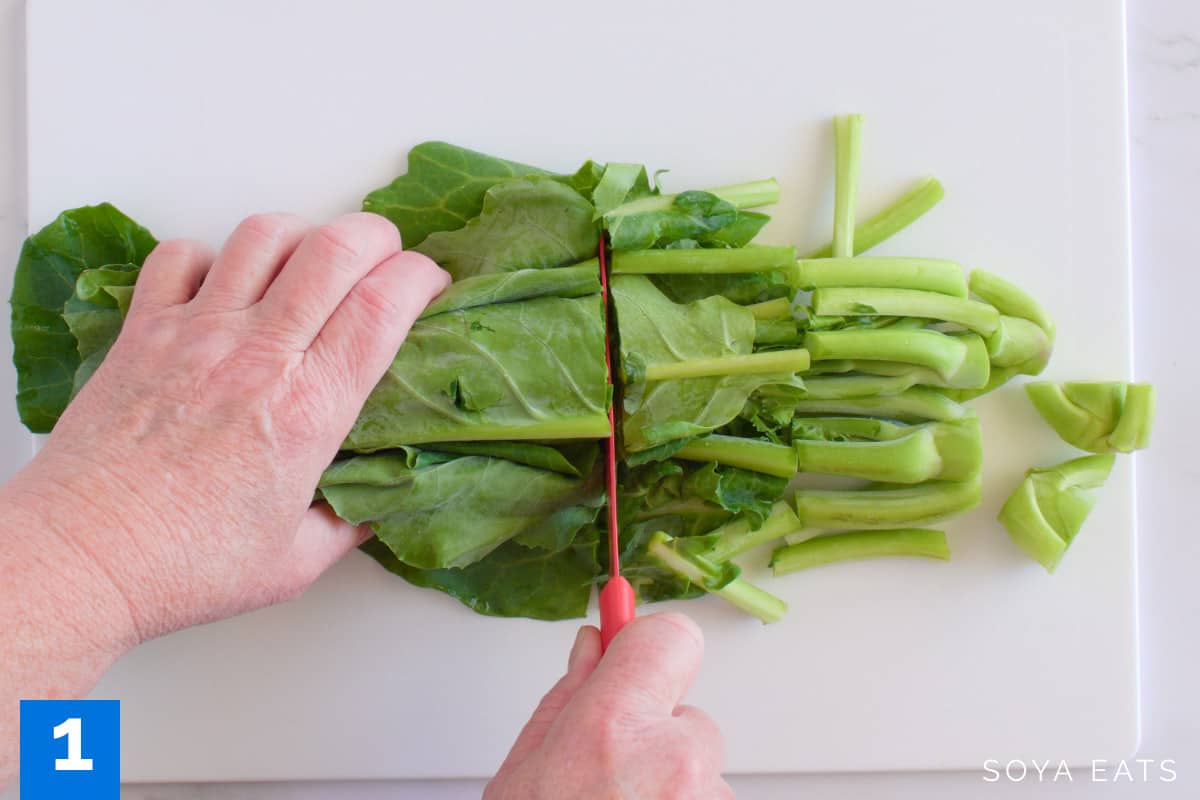
Step 1 – Wash and dry the kalian, and cut into 4 cm (1.57 inches) lengths.
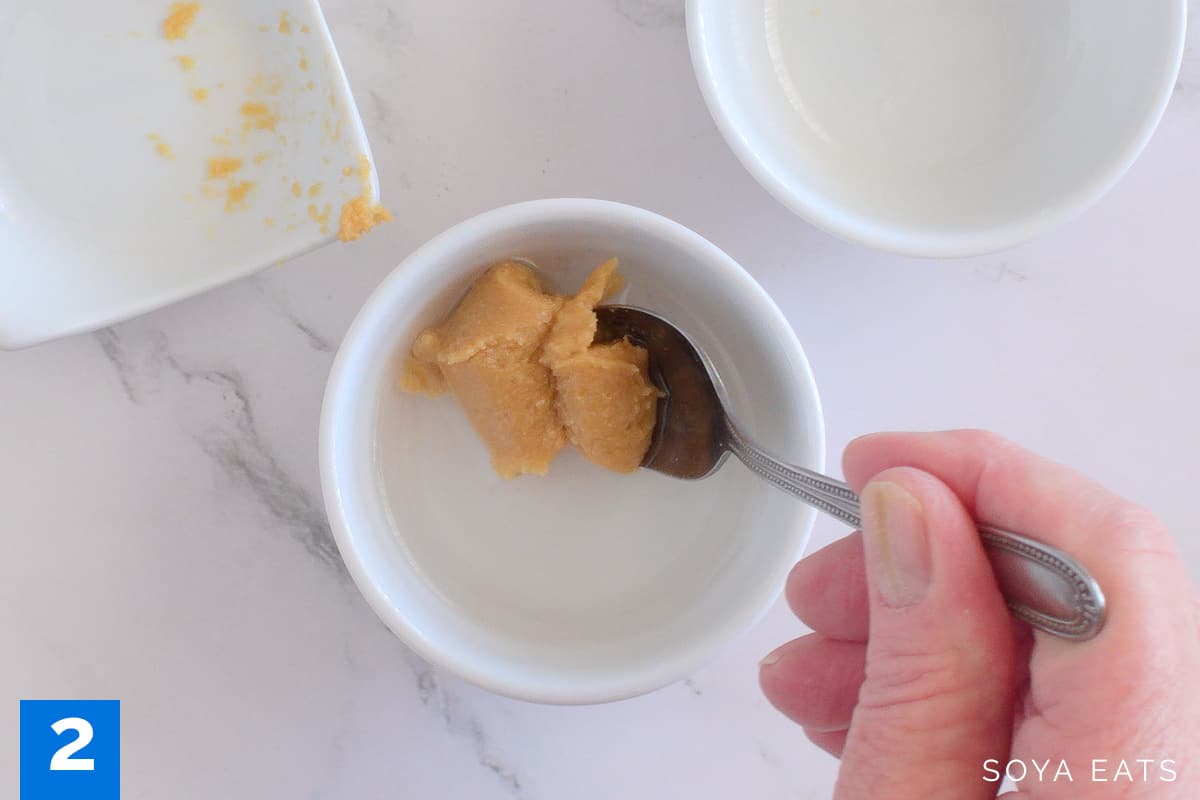
Step 2 – Place the sake, mirin, and miso paste in a bowl and mix well. Cut the butter into small pieces and add to the bowl. Put aside for later.

Step 3 – Place the oil into a skillet and heat over a medium flame. Add the prepared Chinese broccoli to the pan and stir fry for a few minutes until it becomes soft and tender.
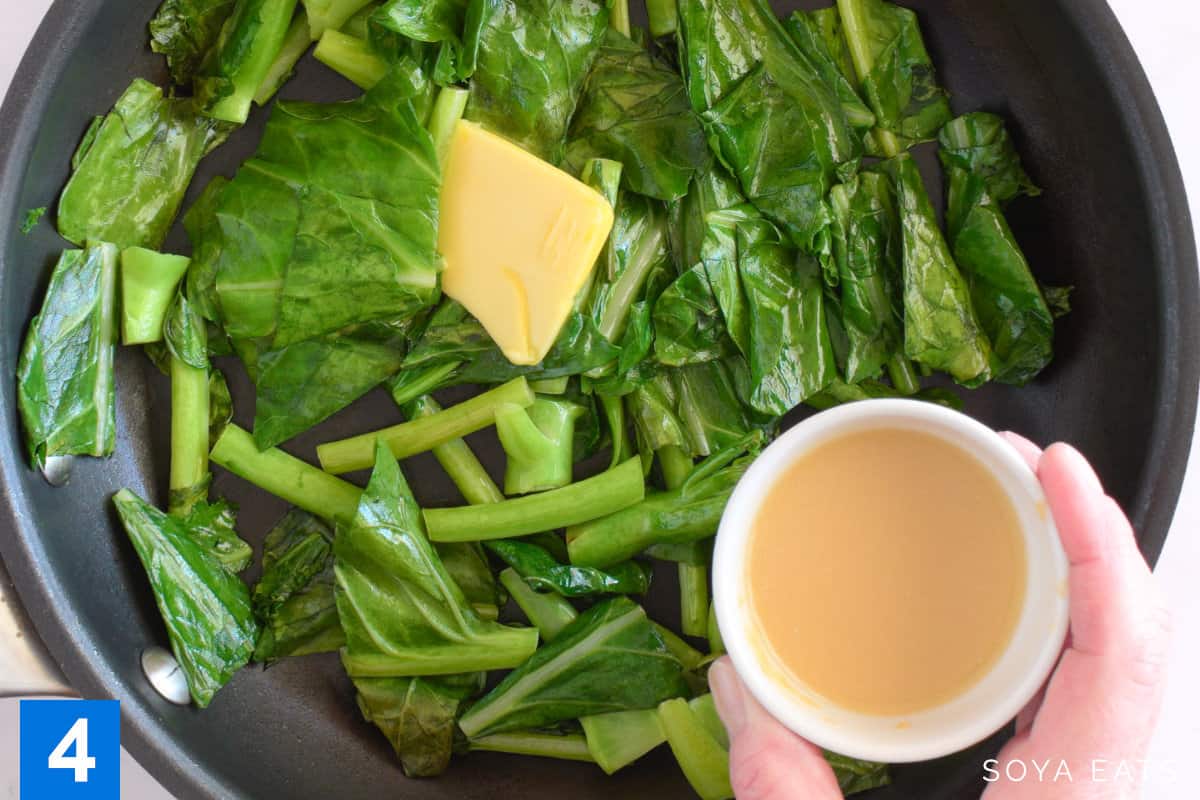
Step 4 – Turn off the heat, add the butter and miso sauce and stir until well combined. Transfer to a serving platter, garnish with sesame seeds, and serve hot.
Recipe Tips
Prevent Chewy Kailan
- If you have older kailan with thick and firm stems, cut these away from the leaves, slice them in half lengthwise or quarters if too thick, and pre-cook them in the microwave oven until tender before stir-frying with the leaves.
- You could cut the stems on a bais to make thin and large slices that can be stir-fried separately for several minutes before adding the leaves.

Serving Size
The serving size of this Chinese broccoli stir fry is half the recipe, about 100 grams (3.5 ounces).
Calories Per Serve
A single-serve has about 128 calories.
Serving Suggestions
Serve this as a simple side to steamed rice and other Asian style dishes.
Substitutions
Cooking Sake
If you can't get cooking sake, you can use Chinese Shaoxing wine, but it will give a slightly different flavor to the dish.
Mirin
Mirin is also known as sweet sake - sake with sugar. If you can't get it, you can use water and sugar. The ratio should be three parts water and one part sugar. For example, mix three teaspoons of water with one teaspoon of sugar.
Miso Paste
There is no substitute for miso paste because it has a unique flavor that is hard to replace, but you could use fish sauce or soy sauce and add these to taste.
FAQ
Broccoli in Chinese is called Gail Lan, kai-lan, or Chinese kale.
You can buy it in most Asian grocery stores.
Yes, Gai Lan can be served raw, but it doesn't taste as nice as it does when cooked.
No, they are different, but they are from the same family. Broccolini is a cross between broccoli and Chinese broccoli.
No, bok choy and Chinese broccoli are not the same - they have different tastes and textures.
Chinese broccoli has pencil-thick stems with leaves branching out from the stems.
Bok choy is a bunch of soft white steams grouped in a cluster at the base, with a green leaf shooting from the top of each stem.
Chinese broccoli is tender when young and becomes firm as it ages. Bok choy is always soft and tender.
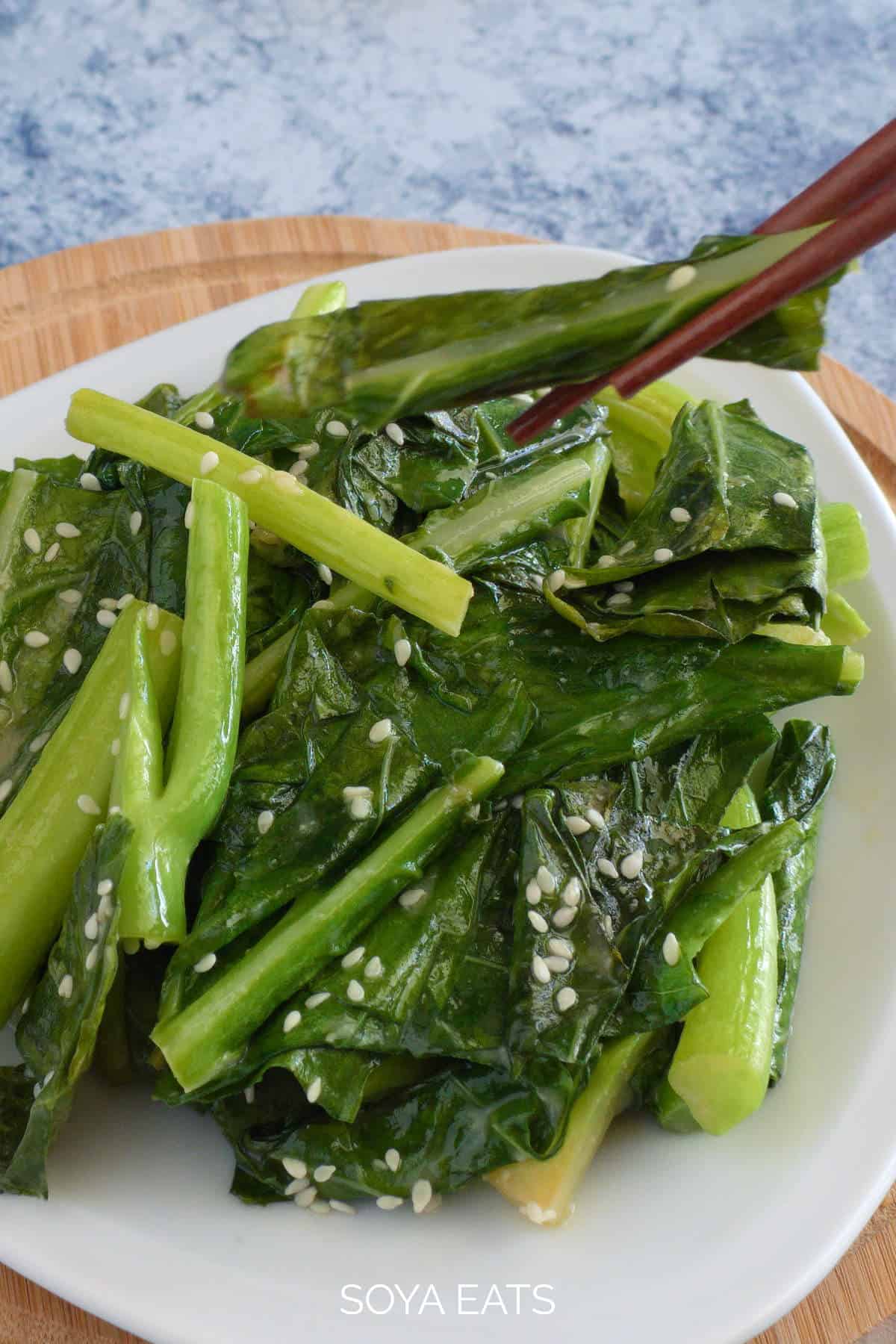
More Easy Recipes
You might also like these recipes have miso as an ingredient:
Recipe
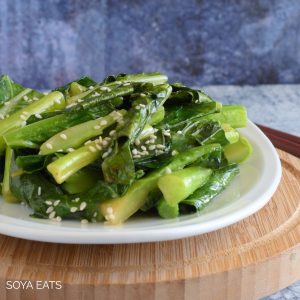
Stir Fried Kailan with Miso Butter
Ingredients
- 200 grams (7 ounces) kalian, can also use spinach or another Chinese vegetable
- ½ tablespoon vegetable oil
Sauce
- 1 ½ teaspoon sake
- 1 ½ teaspoon mirin
- 1 ½ teaspoon white miso paste
- 15 grams (0.52 ounces) of salted butter
Garnish
- 1 - 2 teaspoons white sesame seeds toasted or untoasted
Instructions
- Wash and dry the kalian, and cut into 4 cm (1.57 inches) lengths
- Place the sake, mirin, and miso paste in a bowl and mix well. Cut the butter into small pieces and add to the bowl. Put aside for later.
- Place the oil into a skillet and heat over a medium flame, and add the prepared kalian and stir fry until soft and tender.
- Turn off the heat, add the butter and miso sauce and stir until well combined. Transfer to a serving platter and garnish with sesame seeds and serve hot.
Notes
- You could cut the stems away from the leaves, slice them in half lengthwise or quarters if too thick, and pre-cook them in the microwave oven until tender before stir-frying with the leaves.
- You could cut the stems on a bais to make thin and large slices that can be stir-fried separately for several minutes before adding the leaves.





Rachel says
I love this, it so simple and delicious.